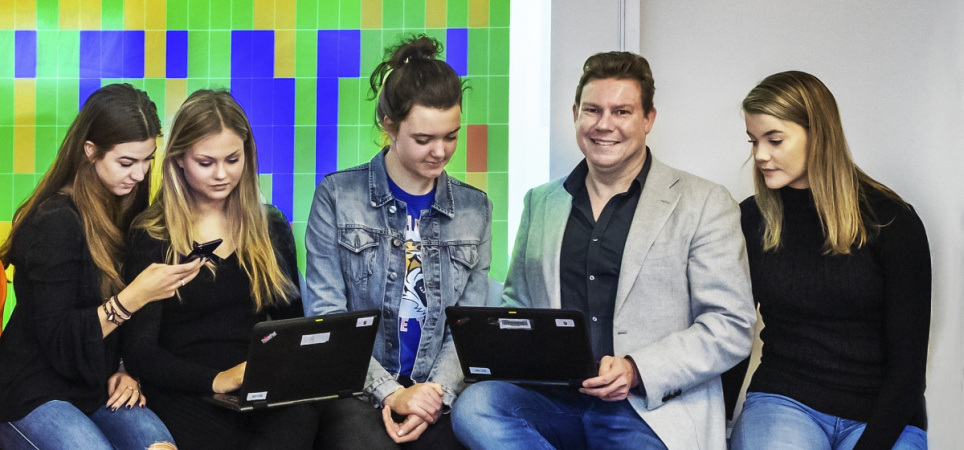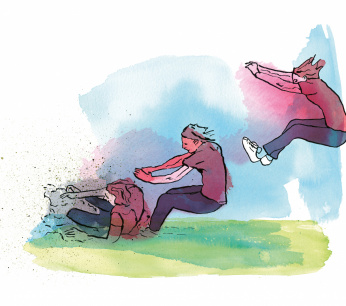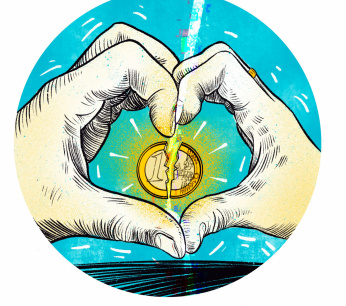Idea: all learning objectives in boxes and colors
Two teachers came up with a digital tool that students use to keep track of the extent to which they master the material. "They are now asking for extra explanation themselves."

Image: Angeliek de Jonge
How do you make students the owner of their learning process, while keeping a close eye on their progress? With that question in mind, teachers Dennis Groot and Ron van der Sluis took part in the pupil2020 project, in which schools set to work with personalized education and ICT. The Alkwin College in Uithoorn started a few years ago with goal-driven education. “A learning objective ensures that students know in advance what is expected of them and why”, says Van der Sluis, educational innovator and physics teacher. “As a result, their motivation grows. Teaching is also more fun because it is easier to let go of the method and tap other sources.
Many teachers worked with Excel sheets to provide insight into learning objectives, but that takes a lot of time
"But if you let go of the class and method more, you want to keep an eye on what students do or do not master well," adds economics teacher Dennis Groot. "Because only in this way can you offer targeted support." Van der Sluis: “Many teachers already worked with Excel sheets to make this transparent, but that takes a lot of time. We were looking for a simple way to make the information more accessible. ”
The result is the digital GPL tool (personalized learning tool). Here, teachers can set the learning objectives, after which students themselves tick a color via a smartphone, iPad or laptop that indicates the degree to which they master a learning objective. The teacher receives all results in one overview on the screen. For example, a cheerful rectangle with mostly green, many blue and some orange and red boxes indicates that the class has a fairly good command of the chapter on economics. This matrix is based on learning objectives, which are broken down by class and student. This is how the question scores: Can you describe what a circular economy is? a little red (no), a third orange (a little), a third green (yes) and a little blue (yes, I can also explain it to someone else).
More involved
The fact that students themselves keep track of their progress not only saves teachers time, the students also become more involved in their learning process. Groot: “They see what they themselves do not yet understand very well, but also which classmate has a blue box and therefore has mastered that learning objective well. Pupils can therefore also contact each other for an explanation. "
The tool is not intended to judge students, but to start a conversation with them
“The advantage is also that they see that they are not the only ones who do not understand something,” emphasizes Van der Sluis. “The question: 'Are there any questions?' the teacher no longer has to ask, because that makes the overview clear. The tool is not intended to settle students, but to start a conversation with them. The nice thing is that they are now going to ask for extra explanation themselves. ”
During the pilot at the economics section, other colleagues were eager to get started as well. “It really went through the school like wildfire,” says Van der Sluis, who built the tool himself. Groot: “The great thing is that the tool can be used for all subjects, regardless of the use of a method or the content of the lesson. Teachers of music and gym also work with it. ” Van der Sluis: “The use goes further than we could foresee. Someone recently used it during a working group with other teachers. This way you can quickly see where everyone is in the process. Ideal."
Art
Formulating good learning goals is a challenge, the teachers notice. Groot: “The trick is to formulate the goals in such a way that students can see for themselves whether they can do it. So instead of a statement: "You know what elasticity is" you ask a question: "Can you explain clearly what elasticity is?"
Van der Sluis: “It is convenient that you can easily copy the learning objectives from each other within the tool and then supplement or change them. That saves a lot of work. ” Groot: “For example, we have already translated the new economy method into learning objectives. I would like it if we could share this with other colleagues in the country. ”
They are therefore making the GPL tool available for a maximum of three euros per student and are now working on an expansion. Van der Sluis: “For example, we want to show the development of students over time, so that you can also start a conversation about their study behavior.”
Those who want to know more about this tool can send an email to info@system7.nl.
This article was published in the Education Magazine of January 2019. Every month the Education Magazine? Become member of the AOb!


